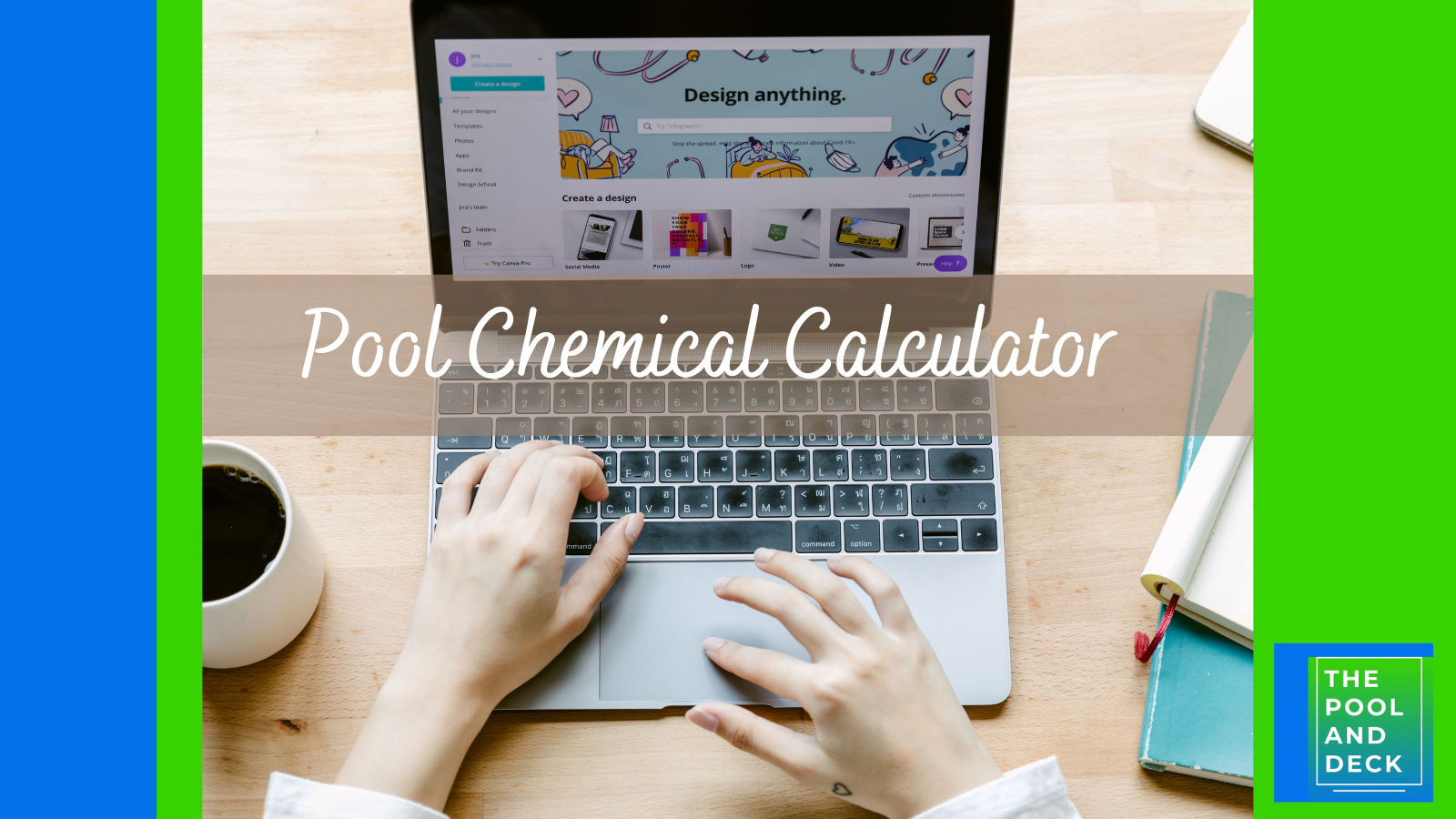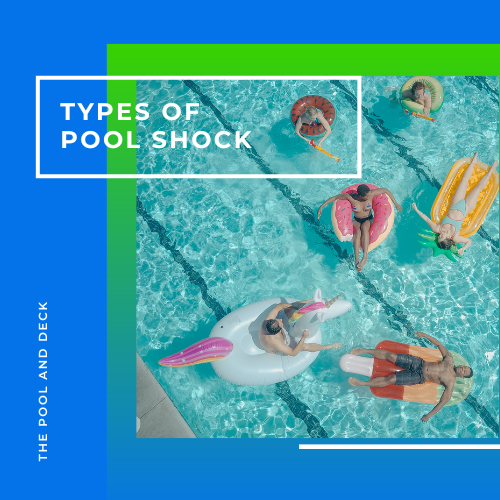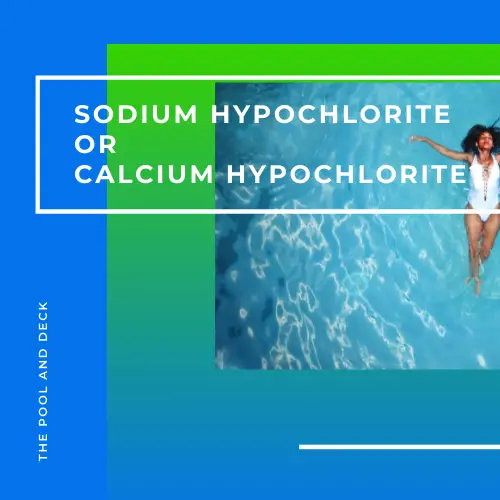pH and Alkalinity High in Pool? (Effect, Cause & Best Solution!)
As an Amazon Associate, I earn from qualifying purchases.
Owning a pool is a dream come true for most of us. However, keeping the water clean, clear, and safe can make you wish you had been more attentive in your chemistry class!

For example, when the pool water turns cloudy, stubborn scale forms on surfaces, and the chlorine effectiveness drops, the common problem is that both pH and alkalinity are too high.
As a new pool owner, you may find words like pH and alkalinity a bit daunting. Don’t worry—you’re not alone. Even experienced pool owners may not always grasp the true nature of pH, Total Alkalinity, and their interrelationship.
Balancing your pool water isn’t as complicated as it sounds. By understanding pH and total alkalinity (TA) and how they interact, you can keep them within the recommended range and your pool inviting and safe for swimmers.
In this post, I explain all you need to know about pH and alkalinity, what factors make them high, how high pH and alkalinity are detrimental, how to lower them, and how to prevent them from becoming high.
Table of Contents
pH, Total Alkalinity (TA), and Their Relationship
To be fair, it is easy to get confused between pH and alkalinity. Even experienced pool owners may use the two terms interchangeably. Let me make the distinction between the two as clear as possible.
What is pH?
pH measures how acidic or basic your pool water is. A logarithmic scale from 0 to 14 is used to measure pH.
Distilled water at a pH of 7 is considered neutral. Muriatic acid has a pH of around 1.0, while soda ash has a pH of around 13.0.
Note that the scale is logarithmic. So water with a pH of 5 is not just a bit more acidic than water with a pH of 6. It is 10X more acidic!
For pool water, the ideal range is between 7.2 and 7.6. Water outside this range can irritate your skin, damage pool equipment, and reduce the effectiveness of your sanitizer (like chlorine).
What is Total Alkalinity (TA)?
Total Alkalinity (TA) is a measure of the amount of alkaline particles dissolved in the water. The alkalinity of water is its ability to neutralize acids. Total Alkalinity acts as a buffer, helping to stabilize pH levels and prevent rapid changes.
TA is measured in parts per million (ppm), and the ideal range is between 80 and 120 ppm.
If TA is too high, the pool pH can rise and become difficult to adjust. Think of alkalinity as the anchor that keeps pH from bouncing around too much.
How are pH and Alkalinity Related?
Total alkalinity (TA) and pH are closely linked because alkalinity stabilizes pH levels. When TA is too high, it prevents pH from being adjusted easily, often causing pH to rise as well.
This relationship means that if alkalinity is out of balance, pH levels will likely be out of range as well.
The Effects of High pH and Alkalinity in Your Pool
When pH and alkalinity levels in your pool are high you will face one or more of the following problems:
- The effectiveness of chlorine to sanitize pool water drops. The result is an increase in pathogens & contaminants and an unhealthy pool.
- Increased risk of algae bloom.
- A swim in such a pool can irritate skin & eyes and shorten the life of bathing suits & goggles.
- Cloudy water & reduced visibility can make the pool unsafe for swimming.
- Calcium buildup and scaling can lead to rough pool surfaces, ladders and reduced water flow through pool plumbing.
- High alkalinity makes it more difficult to adjust the pH to within the recommended levels.
What Causes High pH and Alkalinity in Pools?
High pH and total alkalinity (TA) levels in pools can cause water balance issues that are frustrating to resolve. By understanding the root causes, pool owners can take proactive steps to maintain optimal water chemistry.
Below are the 7 main factors contributing to elevated pH and alkalinity:
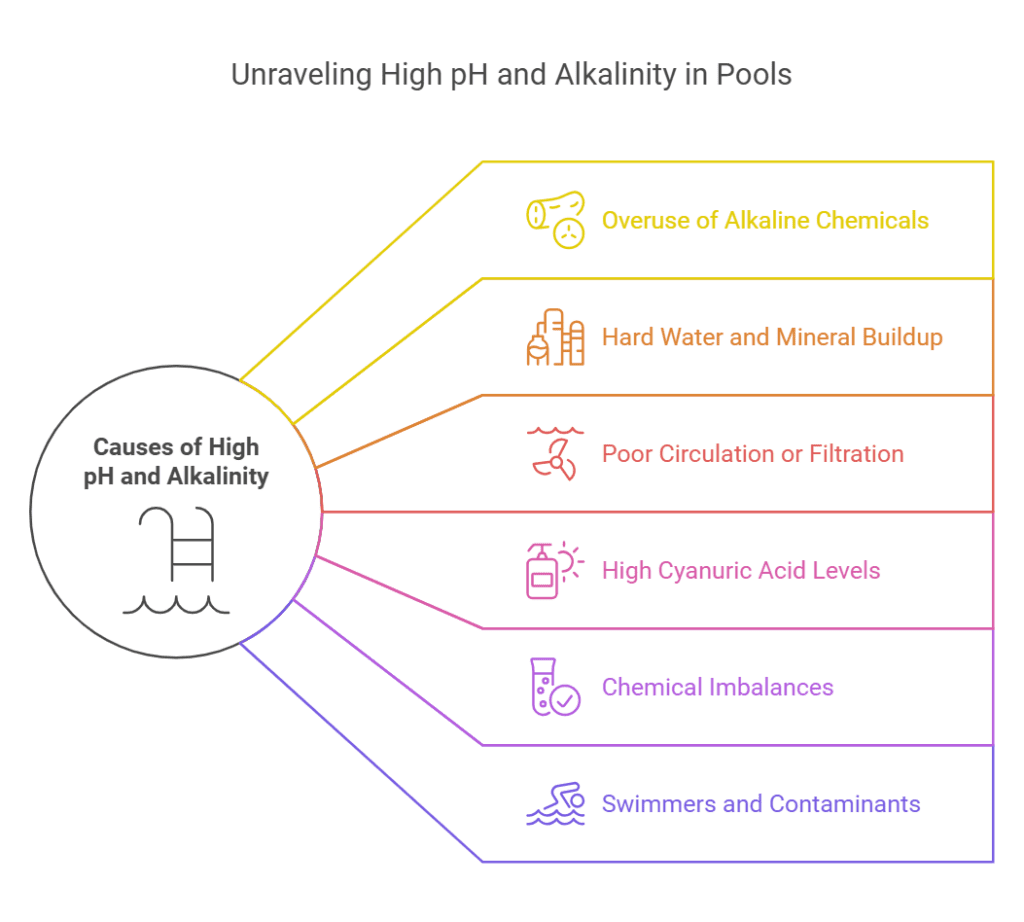
1. Overuse of Alkaline Chemicals
Adding excessive amounts of baking soda (sodium bicarbonate) or other alkaline substances to adjust alkalinity is a common mistake.
While these chemicals are essential for balancing water chemistry, overuse can raise both pH and alkalinity beyond their ideal ranges.
Accurate dosing based on regular pool testing is key to avoiding this issue.
2. Hard Water and Mineral Buildup
If your pool uses hard water for refilling, the high levels of dissolved minerals like calcium and magnesium can raise total alkalinity over time.
This mineral buildup is further amplified by evaporation, which leaves these concentrated minerals behind, gradually increasing TA and pH levels.
3. Poor Circulation or Filtration
An inefficient pool filter or poor water circulation can lead to uneven chemical distribution. This may cause localized areas of high alkalinity or pH, throwing off the overall balance.
Regularly check and maintain your pool’s filtration and circulation systems to prevent imbalances.
4. High Cyanuric Acid (CYA) Levels
Cyanuric acid, often added to stabilize chlorine, can interfere with water balance if used excessively. High CYA levels reduce chlorine effectiveness and can indirectly lead to pH fluctuations.
Trichlor tablets, which contain CYA, may contribute to this issue if not carefully managed.
5. Chemical Imbalances
Missteps in balancing chemicals, such as overusing pH and alkalinity increasers, can inadvertently cause high levels.
Similarly, pool shock treatments or incorrect adjustments to low alkalinity without testing pH first can backfire, leading to elevated pH and TA.
Always calculate doses carefully based on pool chemistry test results.
6. Swimmers and Contaminants
Swimmers can unintentionally introduce substances like sunscreens, lotions, and sweat, which may increase pH and alkalinity. Encouraging proper hygiene, such as showering before entering the pool, can mitigate this effect.
7. Natural Water Chemistry Changes
External factors such as acidic rainwater, evaporation, or water loss due to backwashing and leaks can alter the pool’s chemistry. These factors can slowly increase TA and pH, particularly in areas with hard water.
By identifying the specific causes of high pH and alkalinity, pool owners can implement effective strategies to restore and maintain balanced water chemistry.
Proper testing, careful chemical use, and regular maintenance are essential to keeping your pool water clear, safe, and enjoyable.
How to Test and Diagnose High pH and Alkalinity
Testing your pool water regularly is the first step to maintaining a healthy, balanced pool. By identifying high pH and total alkalinity (TA) early, you can address the problem before it leads to cloudy water, scaling, or ineffective chlorine.
Why Testing Matters
Your pool’s pH levels and alkalinity work together to maintain water balance. If either is off, it can throw the entire system out of alignment. Testing helps you pinpoint which levels need adjustment and ensures your corrective actions are accurate and effective.
Tools for Testing
To test your pool’s chemistry, you can use:
- Liquid Test Kits: Highly accurate and ideal for checking both pH and alkalinity. These kits require you to add reagents to a water sample and compare the results to a color chart.
- Test Strips: A quicker and simpler option, these strips change color when dipped in the water, providing a snapshot of your pool’s chemistry.
- Digital Testers: For the most precise readings, digital meters measure pH and TA to the exact number. They’re easy to use but a lot more expensive. They are not a cost-effective choice for residential pools.
Recommended Test Strips
JNW 7in1 Pool and Spa Test Strips
Simply dip the strip into the water for 2 seconds, hold strip horizontally for 30 seconds, and compare with the color chart on the bottle to obtain accurate water results in just seconds.
Recommended Chemical Test Kit
Taylor K-2005 Complete DPD 9-in-1 Test Kit
Tests for free & total chlorine, bromine, pH, total alkalinity, total hardness, and cyanuric acid (CYA) levels.
How to Test Effectively
- Test in the Morning: Pool chemistry can fluctuate throughout the day, so testing early gives the most consistent results.
- Take a Sample from Elbow Depth: Avoid skimming surface water for your test, as it may not reflect the true chemistry of the pool.
- Follow Instructions Precisely: Whether using a liquid kit, strips, or a digital tester, always follow the manufacturer’s instructions for accurate readings.
Ideal Ranges to Look For
When testing, aim for these ideal ranges:
- pH: 7.2 to 7.6
- Total Alkalinity (TA): 80 to 120 ppm
pH above 7.8 and TA above 150 ppm are cause for concern and urgent action. Based on the test results you can calculate the quantity of the pool chemicals required for balancing your pool chemistry.
How to Lower pH and Alkalinity in Pool Water
Pro Tip: Never try to adjust 2 or more key pool water chemistry parameters at the same time. Moreover, always adjust them in the correct order.
What Should Be Adjusted First? pH or Alkalinity?
When both, pH and alkalinity are high in pool, lower the alkalinity first.
Remember alkalinity is a pH buffer. If alkalinity is not within the recommended range, you will not be able to get the pH down anyway.
The adjustment of alkalinity should be done gradually as any change in alkalinity will affect the pH level too. Adding too much of any chemical can cause imbalances and may result in cloudy water, algae growth or even equipment damage.
Lowering Total Alkalinity (TA)
When you lower Total Alkalinity (TA) first and get it within the ideal range, pH will stabilize more easily.
Step-by-Step Process to Lower Alkalinity:
To lower total alkalinity you can use either muriatic acid or sodium bisulfate. Here’s how to use them.
- Wear protective gear, including chemical-resistant gloves, safety glasses, etc.
- Use Muriatic Acid or Sodium Bisulfate:
- Muriatic Acid: A liquid acid that is highly effective for reducing alkalinity. Handle it carefully and follow safety precautions.
- Sodium Bisulfate (Dry Acid): Easier to handle and store, this granular option works well for residential pools.
- Measure and Dilute Acid:
- Measure the recommended amount of acid based on your pool size and current TA levels.
- Dilute the acid in a plastic bucket. Always add acid to water, not water to acid, to avoid dangerous reactions.
- In case of sodium bisulfate, stir with a wooden stick till the powder has completely dissolved and there are no clumps.
- Pouring the Acid:
- Pour the Muriatic Acid into the deepest part of the pool. Add slowly and carefully without splashing too much.
- Allow the acid to work for 4-6 hours
- Then run the pump to circulate the water.
- As Sodium Bisulfate is milder, you can add it along the pool perimeter as well and run the pump earlier for circulation.
- Retest TA and pH:
- Test again to check TA levels. Repeat if necessary.
Pro Tip: When adjusting total alkalinity, your pH may also drop temporarily. This is normal and can be corrected once TA is stable.
Lowering pH Levels
Once total alkalinity is within the ideal range (80-120 ppm), you can fine-tune your pool’s pH to the recommended 7.2-7.6 range. Calculate the muriatic dose required using my muriatic acid pool calculator.
CAUTION: Muriatic acid is highly corrosive. Handle with care.
Muriatic Acid
Acid Blue Muriatic Acid by CPDI
Vapor Reduction Technology reduces up to 90% of harmful vapors compared to standard muriatic acid.
Alternatively, you can also use a pH Reducer (please check product label for dosage) such as:
pH Down (For Decreasing pH)
Lower and balance the pH & TA levels in your swimming pool water for
- Better pool water clarity
- Improved chlorine efficiency
- Preventing scale formation
- Preventing eye and skin irritation
Step-by-Step Process to Lower pH:
- Use either Muriatic Acid or a pH Reducer:
- Muriatic Acid will need to be diluted with water before pouring.
- HTH pH Down needs no dilution and can be added directly to the pool.
- Add Acid Gradually:
- Pour the muriatic acid solution or the pH Reducer slowly near the return jets while the pool pump is running on “recirculate” mode.
- This helps disperse the acid evenly and prevents damage to surfaces.
- Wait and Test:
- After 2-4 hours, test the pH again. Adjust as needed in small increments to avoid overshooting the ideal range.
You should test the water at least once a week and adjust the chemicals as needed. Maintain proper water balance by adjusting other chemicals such as chlorine, calcium and cyanuric acid.
Preventing High pH and Alkalinity in Pools
The best way to avoid dealing with high pH and total alkalinity (TA) is to prevent the problem from occurring in the first place.
By incorporating a few simple maintenance habits into your routine, you can keep your pool water balanced, clear, and inviting.
Test Your Pool Water Regularly
Frequent and regular testing is your first line of defense. Use a test kit, test strips, or a digital tester to check your pH and alkalinity levels at least once a week.
Add Chemicals in Moderation
When adjusting pool water chemistry, always follow the dosing instructions carefully. Overusing products like baking soda or chlorine stabilizers (cyanuric acid) can push your alkalinity and pH too high.
Always add chemicals gradually and retest after each adjustment.
Maintain Proper Circulation and Filtration
Good water circulation ensures that chemicals are evenly distributed and prevents localized imbalances.
Run your pool pump for 8-12 hours a day, depending on pool size and usage. Clean or replace your pool filter as needed to keep the system running efficiently.
Control External Factors
Be mindful of how outside elements can impact your pool’s water chemistry:
- Rainwater: Acidic rain can disrupt pH and TA levels, so test your pool after heavy rainfall.
- Evaporation: High evaporation rates can concentrate minerals, causing scaling and elevated alkalinity. Refill your pool as needed and adjust water chemistry afterward.
- Debris: Leaves, dirt, and organic matter can decompose and affect your pH. Skim your pool regularly to avoid this.
Pro Tip: Use a pool cover and keep your pool covered whenever it is likely not to be used for a long duration or if inclement weather iis forecast.
Balance Cyanuric Acid and Calcium Hardness
Keep cyanuric acid (CYA) levels between 30-50 ppm to stabilize chlorine without interfering with pH. For calcium hardness, aim for 200-400 ppm to prevent scaling and maintain water clarity.
Stay Consistent with Pool Maintenance
Skim, brush, and vacuum your pool weekly, and shock your pool as recommended to prevent algae blooms and other contaminants that can upset the water chemistry.
Troubleshooting Common Issues After Adjustment
Adjusting pH and total alkalinity (TA) is usually straightforward, but sometimes unexpected issues can arise even after you’ve worked to balance your pool water.
Here’s how to troubleshoot the most common problems and keep your pool in perfect condition.
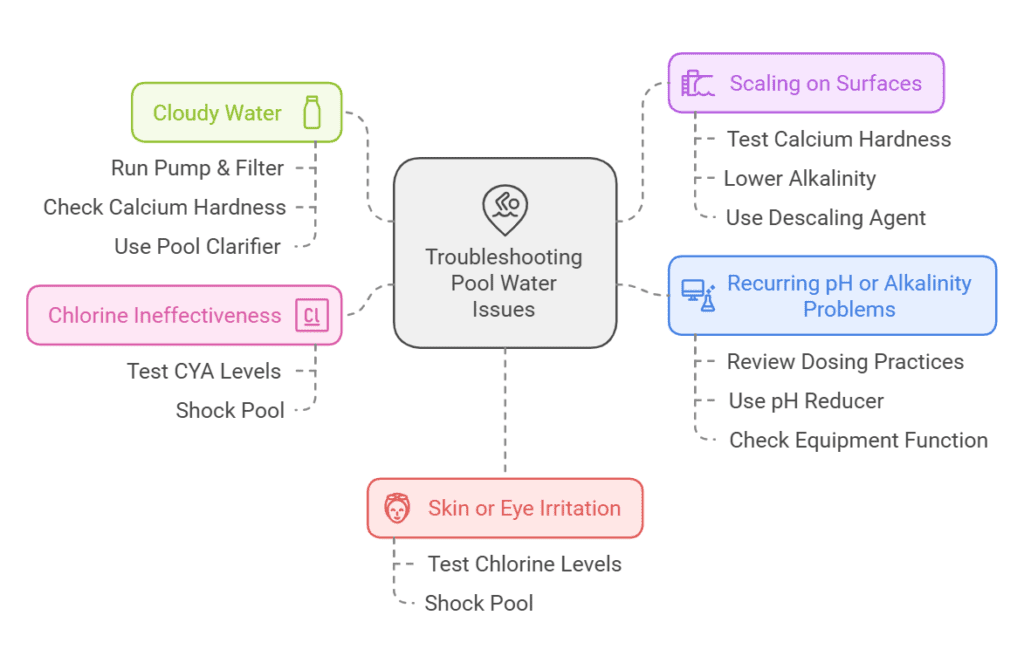
Cloudy Water
After adjusting pH or alkalinity, you might notice your water looks cloudy. This can happen if the chemicals aren’t evenly dispersed or if adjustments caused calcium buildup.
How to Fix It:
- Run your pool pump and filter continuously for 24-48 hours to circulate the water and remove fine particles.
- Check your calcium hardness levels. If they’re too high (above 400 ppm), partially drain and refill the pool with fresh water to dilute the calcium.
- Use a pool clarifier to help the filter trap small particles more effectively.
Scaling on Pool Surfaces
If you’ve adjusted alkalinity but still see white or gray scaling on tiles, walls, or equipment, it’s likely due to calcium deposits caused by lingering high TA or calcium hardness.
How to Fix It:
- Test and confirm calcium hardness is within the ideal range (200-400 ppm).
- Lower your alkalinity slightly if it’s near the higher end of the acceptable range.
- Use a descaling agent to remove buildup from surfaces and prevent further scaling.
Chlorine Still Feels Ineffective
Even after balancing your pH, you might find that your chlorine doesn’t seem to sanitize effectively. This can happen if cyanuric acid (CYA) or other chemical levels are too high.
How to Fix It:
- Test CYA levels; the ideal range is 30-50 ppm. If levels are too high, dilute the pool water by partially draining and refilling.
- Shock your pool with a chlorine-based shock product to eliminate organic contaminants that might be overwhelming your sanitizer.
Recurring pH or Alkalinity Problems
If your pH or alkalinity rises again shortly after adjustment, there may be an underlying cause, such as excessive chemical additions or external factors like hard water.
How to Fix It:
- Review your dosing practices to ensure you’re not overusing alkaline substances like baking soda or stabilizers.
- Consider using a pH reducer regularly if your area has naturally hard water.
- Check your pool equipment for proper function, especially your filter and pump, to ensure consistent water circulation.
Skin or Eye Irritation Persists
Balanced pH should eliminate skin and eye irritation, but if the problem continues, it may be due to high levels of chloramines or insufficient sanitizer.
How to Fix It:
- Test chlorine levels to ensure they’re within the ideal range (1-3 ppm).
- Shock the pool to break down chloramines and refresh your sanitizer levels.
Thank you very much for reading the post. I do hope you found it informative and helpful.





